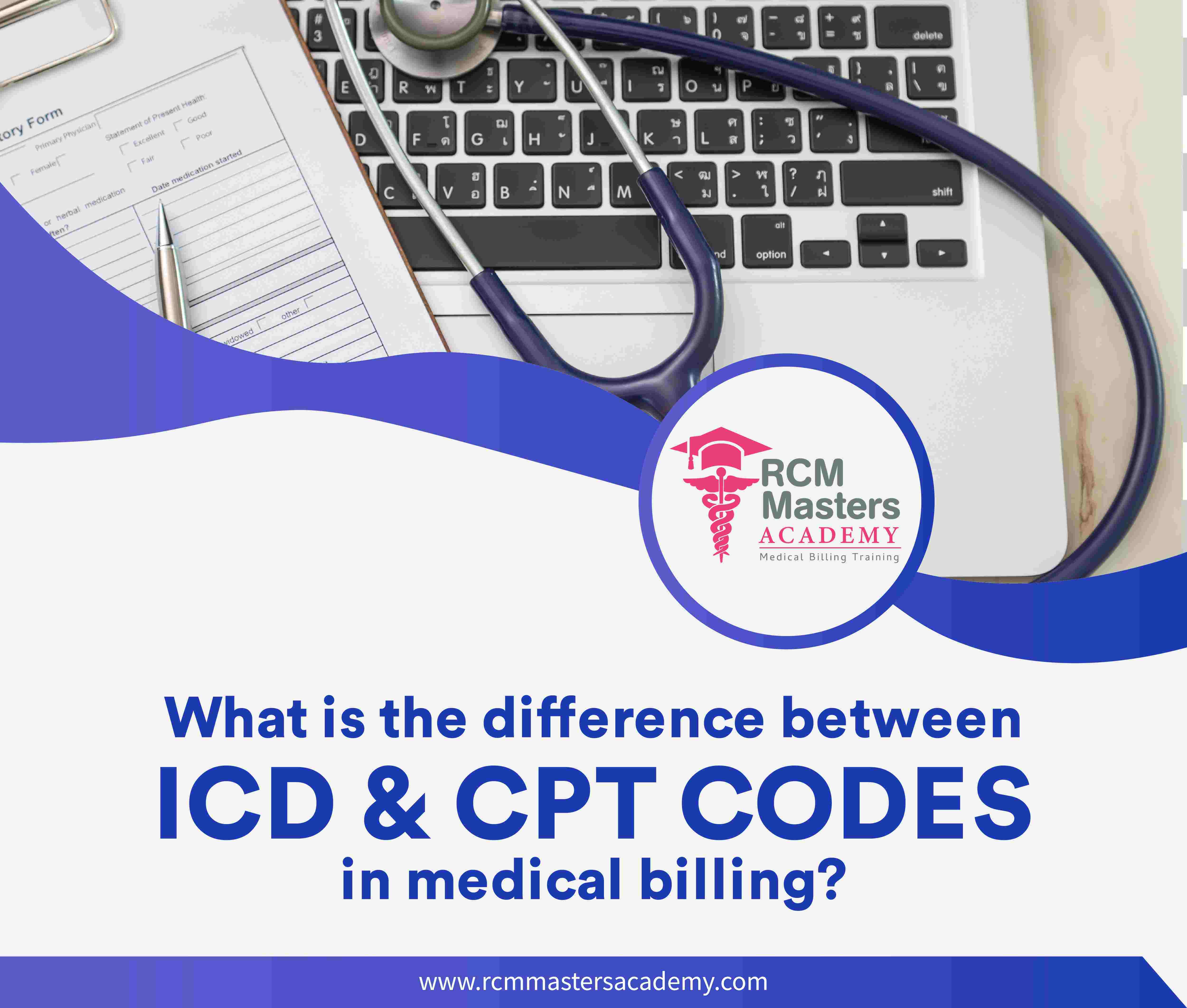 info@rcmmastersacademy.com
info@rcmmastersacademy.com

In the world of medical billing and coding, it is essential to understand the difference between ICD and CPT codes. Both ICD and CPT codes are used to describe medical procedures and diagnoses, but they serve different purposes and are used in different ways. We will explore the differences between ICD and CPT codes and why they are both important in medical billing.
ICD codes, which stand for International Classification of Diseases, are used to describe the diagnosis or reason for a patient's medical visit. ICD codes are standardized codes that are used to classify and report diseases, injuries, and other health conditions. These codes are used by healthcare providers and insurance companies to track the prevalence and incidence of diseases, as well as to determine reimbursement rates for services.
ICD codes are typically three to seven characters in length and can include both alphanumeric characters and decimal points. These codes are updated regularly to reflect new medical discoveries and changes in medical practices. ICD codes are important in medical billing because they are used to describe the medical necessity of a procedure or service, which is required for insurance reimbursement.
On the other hand, CPT codes, which stand for Current Procedural Terminology, are used to describe the specific medical services or procedures that were performed during a patient's visit. CPT codes are used by healthcare providers to bill insurance companies for their services. These codes are typically five digits long and are updated annually to reflect changes in medical practices and technology.
CPT codes can include a range of medical procedures, from routine office visits to complex surgical procedures. They are used to describe the exact services that were provided during a patient's visit, such as a blood test, a vaccination, or a surgical procedure. CPT codes are important in medical billing because they are used to determine the reimbursement rates for healthcare providers.
While ICD codes are used to describe the diagnosis or reason for a patient's medical visit, and CPT codes are used to describe the specific medical services or procedures that were performed during a patient's visit, these two coding systems are often used together in medical billing. This is because insurance companies require both ICD and CPT codes to determine the medical necessity of a procedure or service and to determine the appropriate reimbursement rates.
It is important for healthcare providers and medical billers to understand the difference between ICD and CPT codes and how they are used in medical billing. Proper coding can ensure that healthcare providers are properly reimbursed for their services and that insurance companies are accurately charged for the medical care that was provided.
In conclusion, ICD and CPT codes are two important coding systems used in medical billing. While ICD codes describe the diagnosis or reason for a patient's medical visit, CPT codes describe the specific medical services or procedures that were performed during a patient's visit. Both of these coding systems are used together in medical billing to ensure proper reimbursement for healthcare providers and accurate charges for insurance companies. Understanding the differences between ICD and CPT codes is essential for anyone involved in medical billing and coding.
You can enroll for our Online Medical Billing Training here: